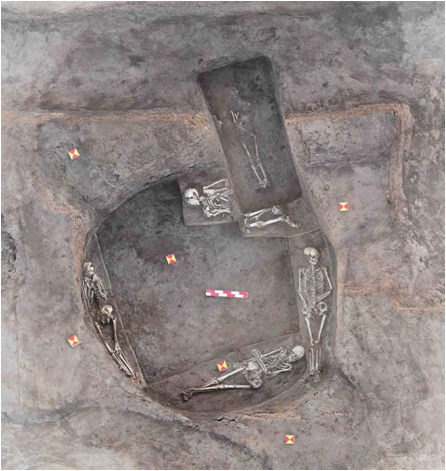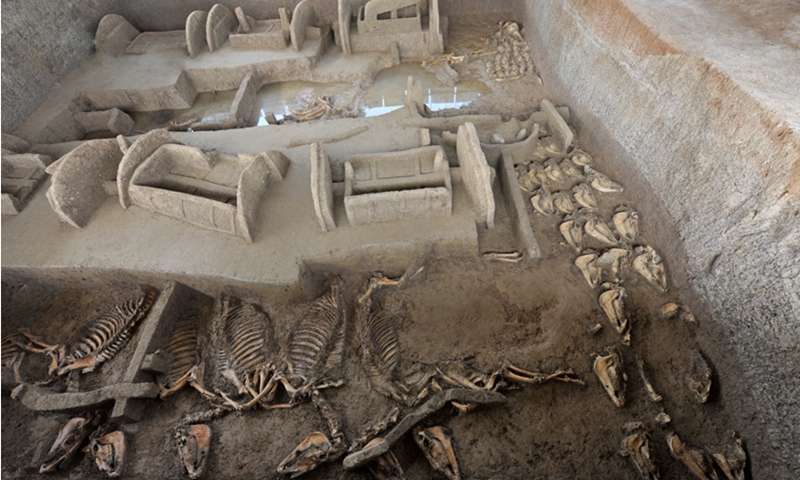Ancient tomb built 2,600 years ago demonstrates China’s ethnic fusion
By Ji Yuqiao Source: Global Times Published: 2020/11/30 23:01:56

Photo: Courtesy of the Luoyang City Cultural Relics and Archeology Research Institute
With its long history as a capital city, Luoyang in Central China’s Henan is a treasure house of cultural relics. Recently, more tombs built more than than 2,600 years ago have been excavated in the city. The cultural relics discovered within show that the owners belonged to a nomadic ethnic group, proving how ethnic fusion in China began a long time ago.
The tombs, located in a village in Luoyang, came to light after they were pillaged by robbers. Excavation work on the burial site started in 2013 and more than 400 tombs have been discovered to date, the Luoyang City Cultural Relics and Archeology Research Institute announced on Monday.
Based on burial objects discovered on site, experts from the institute deduced that these tombs belonged to nobles of an ethnic minority named Rong that had lived in Northwest China and then moved into what is now Central China thousands of years ago, Wu Yeheng, who is in charge of the excavation work, said in a statement on Monday.
Alongside burial objects such as cowries, the heads and hooves of horses, cows and sheep were found within the tombs. This custom is similar to the burial customs of the Rong people described in historical materials from the Eastern Zhou Dynasty (770 BC-256 BC).
Small burial objects were placed above the head of the deceased while cowries were placed next their heads or in their mouths.
Although some Rong customs were observed in the graves, archeologists found that Han influence – the Han are Chinese largest ethnic group – is also apparent. Changes in the design of bronze burial objects and the order in which pottery items were placed in the tombs demonstrate that the Rong culture had been influenced a great deal by Han culture.
The human skeletons found in the tombs have obvious signs that they belonged to a North Asian Mongolian race, such as possessing long and sturdy bones and a common height of 1.8 meters for adult men, which is very different from remains often found in Han tombs from the same period.
One of the most well-preserved gravesite is the No.15 Tomb, where Chinese archeologists found a number of exquisite funerary objects, including a bronze chime with complicated and beautiful patterns, as well as jade ritual objects such as jade rings.
The horse and chariot pits in the tomb indicate that the owner was likely a high-class noble.

Photo: Courtesy of the Luoyang City Cultural Relics and Archeology Research Institute
Some animal skeletons were also excavated from the tombs. Besides the more commonly seen horses and cows, skeletons of sheep and dogs were found around the main pit where the coffin of the noble was buried.
Researchers say their next step will be to use technological means such as DNA contrast studies to explore the blood relation and differences between the ancient Rong people and original residents of Central China.
The new archeological discovery has captured the interest of Chinese netizens, becoming a hot topic on Sina Weibo on Monday.
Netizens expressed their pride in the new discoveries and the long history and rich cultural heritage of China.
Posted in: CULTURE & LEISURE,ARTS FOCUS